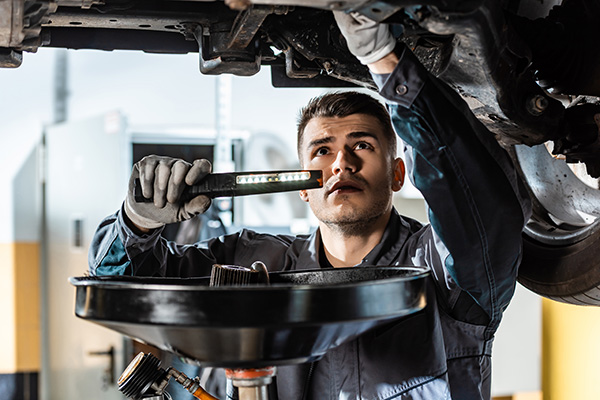
Ever wondered what goes on behind the scenes when you take your car in for an oil change? It's a routine maintenance task that keeps your engine running, but have you ever stopped to think about the process itself? In this article, we'll uncover how repair shops perform oil changes, demystifying the procedure and shedding light on the importance of regular oil maintenance for your vehicle.
Step 1: Vehicle Inspection
Before the oil change, a skilled technician will thoroughly inspect your vehicle. This inspection typically includes checking the condition of the engine, examining the oil level and quality, and assessing any potential leaks or issues that may need attention.
Step 2: Draining the Old Oil
Once the inspection is complete, it's time to drain the old oil from the engine. The technician will locate the oil drain plug on the bottom of the engine oil pan and remove it to allow the old oil to flow out completely. This step ensures that all contaminants and impurities are removed from the engine, preparing it for fresh oil.
Step 3: Replacing the Oil Filter
While the old oil is draining, the technician will also replace the oil filter. The oil filter is removing dirt, debris, and other contaminants from the oil as it circulates through the engine. A new filter ensures optimal filtration efficiency and helps prolong the life of your engine.
Step 4: Adding Fresh Oil
With the old oil drained and the new filter installed, it's time to add fresh oil to the engine. The technician will carefully pour the recommended type and amount of oil into the engine, taking care not to overfill or underfill. Proper oil levels are necessary for optimal engine performance and longevity.
Step 5: Final Checks and Clean-Up
Once the new oil is added, the technician will perform a final check to ensure everything is in order. This may include verifying the oil level, checking for any leaks, and inspecting other fluid levels such as coolant and transmission fluid. Any spilled oil or debris will be cleaned up, leaving your engine bay looking neat and tidy.
Step 6: Documenting the Service
Documenting the oil change service is important for both the repair shop and the vehicle owner. Detailed records provide proof of maintenance for warranty purposes and help track the vehicle's service history. Repair shops often provide customers with a service report outlining the work performed, including oil type, filter replacement, and any additional recommendations.
Step 7: Recycling Old Oil
After draining the old oil, responsible repair shops ensure it's properly recycled. This eco-friendly practice prevents environmental harm by keeping used oil out of landfills and water sources. Specialized recycling centers reprocess the oil, transforming it into valuable resources like fuel or lubricants for other applications.
Don't wait until your engine starts acting up—trust the experts at NOLA Automotive Repairs for your next oil change. Book now and enjoy peace of mind, knowing your car is in the right hands.